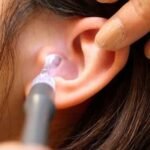Hair removal is a deeply personal decision, influenced by individual preferences, skin sensitivity, pain tolerance, and desired outcomes. With a myriad of methods available, from traditional techniques to modern innovations, navigating the choices can be overwhelming. Among the most debated are sugaring and waxing, both time-tested methods with their own unique characteristics.

Sugaring, tracing its roots back to ancient Egypt, involves a simple paste made from sugar, lemon juice, and water. This concoction, resembling thick honey, is applied to the skin and swiftly removed against the direction of hair growth, plucking hairs from the root. Its proponents praise its simplicity and natural ingredients, appealing to those with sensitive skin or allergies. Sugaring is often considered less painful than waxing due to its gentler adhesion to the skin, making it a preferable option for individuals with low pain tolerance.
On the other hand, waxing, with a history dating back to ancient civilizations like the Egyptians and Greeks, utilizes heated wax to adhere to hair and remove it swiftly from the root upon solidification. It comes in various forms, such as soft wax requiring strips for removal or hard wax that hardens on its own, simplifying the process. Waxing is widely accessible, offered in countless salons and spas, making it convenient for those seeking professional services. Its ability to provide longer-lasting results compared to shaving appeals to many, as it delays hair regrowth and promotes smoother skin over time.
When weighing the pros and cons of sugaring versus waxing, several factors come into play. Sugaring’s natural ingredients and exfoliating properties are attractive to individuals seeking a gentler approach to hair removal. However, mastering sugaring technique may require practice, and access to professional sugaring services can be limited in certain areas. On the other hand, waxing’s precision and longer-lasting results are favored by those with busy lifestyles and a desire for convenience. Nevertheless, the pain associated with waxing, along with potential skin irritation and ingrown hairs, may deter some from choosing this method.
In this blog post, we’ll dive into the details of sugaring and waxing to help you decide which method might be best for you.
What is Sugaring?
Sugaring: The Sweet Solution to Hair Removal
Sugaring, a method with roots tracing back centuries, offers a sweet solution to the perennial quest for smooth, hair-free skin. At its core, sugaring involves concocting a simple yet effective paste crafted from humble ingredients: sugar, lemon juice, and water. This mixture, when heated to the right consistency, transforms into a sticky substance that clings to unwanted hair with finesse.
The process begins with the application of the sugaring paste onto the skin, strategically swiped against the grain of hair growth. Then, in a swift motion akin to the flick of a wand, the paste is yanked off, swiftly uprooting the hair from its follicle. The result? Silky, smooth skin that beckons to be touched.
Sugaring enthusiasts often champion its virtues as a natural alternative to conventional waxing. With its minimalistic ingredient list, sugaring stands in stark contrast to waxing products laden with synthetic compounds. Lemon juice lends its acidic properties to the mix, aiding in exfoliation and brightening the skin, while sugar provides a gentle yet effective adhesive for hair removal. Water acts as the conduit, facilitating the transformation of these basic components into a potent depilatory potion.
Beyond its efficacy, sugaring boasts additional allure due to its accessibility. Unlike specialized waxing kits that may require a pilgrimage to beauty supply stores, the ingredients for sugaring can be found in most kitchen cabinets, ready to be enlisted in the pursuit of smooth skin.
Pros of Sugaring:
Natural Ingredients
Sugaring paste boasts a simple yet effective blend of natural ingredients, usually comprising sugar, lemon juice, and water. This minimalistic recipe makes it an attractive option for individuals with sensitive skin or allergies. Unlike some waxing products that may contain artificial additives or chemicals, sugaring offers a more wholesome approach, minimizing the risk of adverse reactions. Additionally, the natural components often possess inherent skin-nourishing properties, contributing to a gentler hair removal experience.
Less Painful
One of the most celebrated advantages of sugaring is its reputation for being less painful compared to traditional waxing methods. The consistency of the sugaring paste allows it to adhere primarily to the hair rather than the skin. As a result, when the hair is removed, there is typically less pulling on the skin, reducing discomfort and minimizing the potential for irritation or inflammation. This aspect makes sugaring particularly appealing for individuals with low pain tolerance or those seeking a more comfortable hair removal solution.
Exfoliating Properties
Beyond its hair removal benefits, sugaring also offers exfoliating properties that contribute to improved skin texture and appearance. As the sugaring paste is applied and removed, it gently lifts away dead skin cells, revealing smoother, rejuvenated skin underneath. This exfoliation process not only helps to prevent ingrown hairs but also promotes a more even skin tone and enhances the effectiveness of subsequent skincare products. The result is skin that feels not only hair-free but also noticeably softer, healthier, and more radiant.
Cons of Sugaring
Requires Skill
Despite its appeal, sugaring can pose challenges due to the skill required to execute it effectively. Achieving optimal results with sugaring often demands precision and technique, which may take time and practice to develop. Properly applying and removing the sugaring paste while ensuring thorough hair removal without causing discomfort or skin damage requires a level of skill that not everyone may possess initially. As a result, individuals who attempt sugaring at home or inexperienced technicians may encounter difficulties in achieving satisfactory outcomes.
Limited Availability
While sugaring can be performed at home with the right materials and technique, accessing professional sugaring services may prove challenging in some areas. Unlike waxing, which is widely available at many salons and spas, finding a skilled and experienced sugaring technician may be more difficult, especially in regions where sugaring is less popular or less commonly offered. This limited availability can inconvenience individuals who prefer professional treatments or seek assistance from trained practitioners to ensure optimal results and minimize the risk of complications.
What is Waxing?
Waxing is a widely used technique for removing unwanted body hair. It involves applying a warm wax to the skin in the area where hair needs to be removed. The wax adheres to the hair as well as the skin, and when it cools and hardens, it effectively traps the hair within it. After the wax has cooled, it is swiftly pulled off in the opposite direction of hair growth, removing the hair from the root.
There are different types of wax used for this purpose. Soft wax, also known as strip wax, requires a thin layer of cloth or paper strips to be applied over the wax. Once the wax hardens, the strips are quickly pulled off, taking the wax and hair with them. On the other hand, hard wax, also called stripless wax, hardens on its own without the need for strips. It forms a firm grip on the hair, allowing it to be removed directly without the use of additional materials.
Waxing is effective for removing hair from various parts of the body, including the legs, arms, underarms, bikini area, and face. It provides relatively longer-lasting results compared to shaving because it removes hair from the root, which means it takes longer for the hair to grow back. However, waxing can be painful, especially for those with sensitive skin or when performed in sensitive areas. Additionally, some individuals may experience temporary redness or irritation after waxing. Nevertheless, many people choose waxing for its convenience and effectiveness in achieving smooth, hair-free skin.
Pros of Waxing
Longer Lasting Results
Waxing offers longer-lasting results compared to shaving. By removing hair from the root, it delays the regrowth process. This means that hair tends to grow back finer and softer over time, and it takes longer for the hair to become noticeable again. Consequently, individuals who choose waxing can enjoy smoother skin for an extended period before needing another treatment.
Widely Available
Waxing services are widely available at numerous salons and spas, making it a convenient option for many people. Whether you live in a bustling city or a small town, chances are you can easily find a salon or spa offering professional waxing services. This accessibility allows individuals to schedule appointments at their convenience and choose from a variety of waxing techniques and styles to suit their preferences.
Precision
Waxing enables precise hair removal, making it suitable for targeting smaller areas with accuracy. This precision is particularly beneficial for areas such as the eyebrows, upper lip, and bikini line, where fine detail and shaping are desired. Unlike shaving, which can result in uneven or missed patches of hair, waxing allows for smooth and uniform hair removal, achieving a cleaner and more defined look. Additionally, waxing helps to maintain hair symmetry and contouring, enhancing facial features and body aesthetics.
Cons of Waxing
Painful
Waxing is often perceived as a more painful hair removal method compared to sugaring, particularly for individuals with sensitive skin or when performed in more sensitive areas of the body. The process involves applying hot wax to the skin, allowing it to adhere firmly to both the hair and the skin before swiftly removing it. This pulling action can cause discomfort, especially for those with low pain tolerance. Additionally, the heat from the wax can exacerbate sensations of discomfort, leading to a more painful experience overall.
Potential for Irritation
Despite its widespread popularity, waxing can sometimes lead to skin irritation or other adverse reactions. Following a waxing session, some individuals may experience redness, inflammation, or even the formation of ingrown hairs. These issues are often exacerbated if the skin is not adequately cared for post-treatment. Failure to follow proper aftercare instructions, such as avoiding sun exposure or using soothing skincare products, can increase the likelihood of irritation and prolong the recovery process. Furthermore, individuals with sensitive skin or certain skin conditions may be more prone to experiencing these side effects, making waxing a less suitable option for them.
Conclusion:
Both sugaring and waxing are effective methods of hair removal with their own sets of pros and cons. Ultimately, the best method for you will depend on your individual preferences, skin type, and tolerance for pain. If you prefer a more natural option with fewer additives, sugaring may be the way to go. However, if you’re looking for longer-lasting results and the convenience of professional services, waxing might be the better choice. Regardless of which method you choose, it’s essential to properly prepare your skin before treatment and follow up with post-care to minimize irritation and achieve the best results possible.
Top 20 FAQs about The Great Debate: Sugaring vs. Waxing for Hair Removal
- Which method is less painful: sugaring or waxing? Answer: Many individuals find sugaring to be less painful than waxing due to its gentler application and removal process.
- Does sugaring or waxing last longer? Answer: Both methods typically provide similar durations of hair-free skin, as they both remove hair from the root. However, individual results may vary.
- Is sugaring or waxing better for sensitive skin? Answer: Sugaring is often recommended for sensitive skin due to its natural ingredients and less abrasive removal process.
- Can sugaring or waxing cause ingrown hairs? Answer: Both methods have the potential to cause ingrown hairs, but proper exfoliation and skincare after treatment can help minimize this risk.
- Which method is more eco-friendly: sugaring or waxing? Answer: Sugaring is often considered more environmentally friendly as it typically uses biodegradable ingredients and generates less waste compared to waxing.
- Is sugaring or waxing more expensive in the long run? Answer: The cost of sugaring and waxing treatments can vary depending on factors such as location and salon prices, but both methods generally have comparable long-term costs.
- Can sugaring or waxing be done at home? Answer: Both sugaring and waxing can be done at home using DIY kits, but achieving professional-quality results may require practice and skill.
- Which method is faster: sugaring or waxing? Answer: The speed of both methods depends on the individual’s skill and experience, but they typically offer similar efficiency in removing hair from large areas.
- Does sugaring or waxing work better on coarse hair? Answer: Both methods can effectively remove coarse hair, but some individuals may find sugaring more gentle and less abrasive on the skin.
- Can sugaring or waxing cause allergic reactions? Answer: While allergic reactions are rare, individuals with allergies to specific ingredients in sugaring or waxing products should exercise caution and perform patch tests before treatment.
- Which method is more customizable: sugaring or waxing? Answer: Both sugaring and waxing can be customized to target specific areas and hair types, depending on the practitioner’s skill and technique.
- Is sugaring or waxing suitable for all skin types? Answer: Sugaring and waxing can be suitable for most skin types, but individuals with certain skin conditions or sensitivities should consult with a dermatologist before treatment.
- Does sugaring or waxing lead to smoother skin? Answer: Both methods can result in smooth skin, but some individuals may find sugaring leaves the skin feeling softer and less irritated compared to waxing.
- Can sugaring or waxing be used on all body parts? Answer: Sugaring and waxing can be used on most body parts, including the legs, arms, bikini area, and face, but caution should be exercised in sensitive areas.
- Does sugaring or waxing cause more skin irritation? Answer: Skin irritation can occur with both methods, but proper pre- and post-treatment care can help minimize this risk.
- Which method has a longer history: sugaring or waxing? Answer: Sugaring has a longer historical background, with origins dating back thousands of years, while waxing gained popularity more recently.
- Can sugaring or waxing lead to skin damage? Answer: When performed correctly, both sugaring and waxing are generally safe, but improper technique or allergic reactions can potentially lead to skin damage.
- Does sugaring or waxing require hair to be a certain length? Answer: Both methods require hair to be a certain length for optimal results, typically around 1/4 to 1/2 inch long.
- Which method is less messy: sugaring or waxing? Answer: Sugaring is often considered less messy than waxing, as the paste can be easily cleaned up with water and does not leave sticky residue.
- Can sugaring or waxing be performed during pregnancy? Answer: While both methods are generally safe during pregnancy, it’s advisable to consult with a healthcare professional before undergoing any hair removal treatment.
Related posts:
 Air Pollution Exacerbates Sleep Apnea Risk and Severity, Finds New Study
Air Pollution Exacerbates Sleep Apnea Risk and Severity, Finds New Study
 The Deafening Truth: How Traffic Noise Raises the Risk of Cardiovascular Diseases
The Deafening Truth: How Traffic Noise Raises the Risk of Cardiovascular Diseases
 Decoding the ‘Love Brain’ Syndrome: 5 Signs to Watch Out For
Decoding the ‘Love Brain’ Syndrome: 5 Signs to Watch Out For
 Beauty Secrets: Your Guide to Health and Beauty
Beauty Secrets: Your Guide to Health and Beauty
 What Is Swimmer’s Ear: Causes, Symptoms, Treatments, and Prevention
What Is Swimmer’s Ear: Causes, Symptoms, Treatments, and Prevention
 5 Tips to Beat the Heat in the Kitchen this Summer
5 Tips to Beat the Heat in the Kitchen this Summer
 Effective Communication to Deep Breathing: 5 Anger Management Tips to Prevent Relationship Damage
Effective Communication to Deep Breathing: 5 Anger Management Tips to Prevent Relationship Damage
 Enjoy Sipping on Tender Coconut? Know Easy Tips to Clean, Store, and Reuse Its Outer Shell
Enjoy Sipping on Tender Coconut? Know Easy Tips to Clean, Store, and Reuse Its Outer Shell
 Love Donuts? Try These 5 Delectable Varieties to Satisfy Your Sweet Tooth This National Donuts Day
Love Donuts? Try These 5 Delectable Varieties to Satisfy Your Sweet Tooth This National Donuts Day





